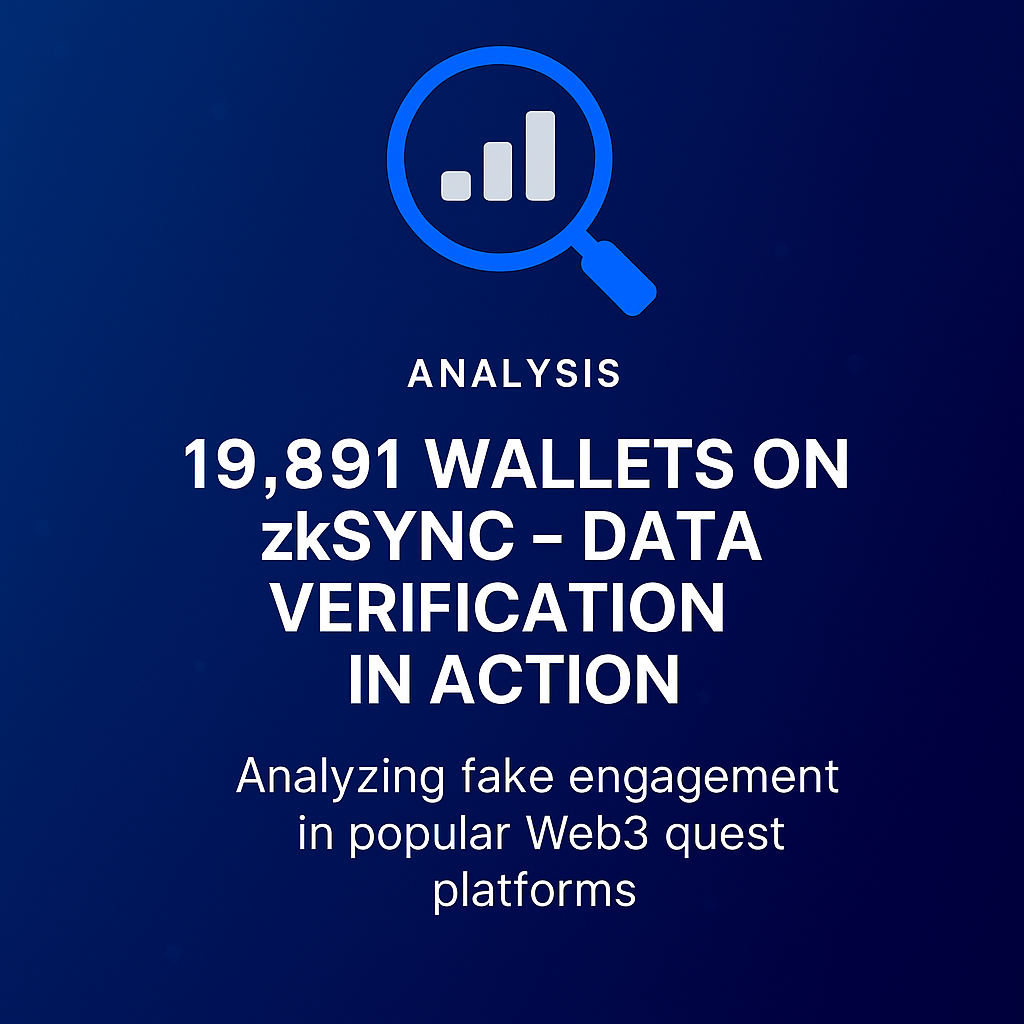
Analysis: 19,891 Wallets on zkSync – Data Verification in Action
How curiosity, precise filtering, and data tools revealed the verified size of a massive wallet farm.
Introduction
When Ling’s viral Twitter thread revealed an extreme airdrop farmer on zkSync with over 21,000 wallets, the number was quickly repeated across media and the community — often without deeper verification.
In blockchain forensics, accuracy matters. My objective wasn’t to echo the claim, but to validate it with precise, on-chain data.
This analysis details how, within just over an hour, I verified the claim count, cleaned the data, and published a precise dataset for the community.
Background

On September 10, 2023, Ling published a detailed thread showing how a single actor:
-
Funded thousands of wallets with small ETH amounts
-
Created a closed-source token ($GEM)
-
Built a private DEX to simulate activity between wallets
-
Claimed rewards across more than 21,000 wallets
While the post spread quickly, my focus was to validate the figure through precise on-chain analysis.
Motivation
The driver was clear: curiosity and the pursuit of accurate data.
-
What exactly was the size of the whitelisted wallet cluster?
-
Could the claim count be confirmed from on-chain data?
-
How many addresses were failed attempts, bots, or simply not whitelisted?
Methodology

At the time, only Zettablock offered a queryable on-chain data warehouse for zkSync.
Building the filter
I wrote a SQL query targeting the $GEM token contract, filtering for:
-
Successful claims
-
Transfers >0.1 GEM (removing failed/non-whitelisted claims)
-
Only from the whitelisted addresses
Execution speed
From seeing the tweet to having the dataset ready: less than 1 hour of work.
Dataset published to GitHub within 17 hours of Ling’s thread.
Findings

-
Ling’s original claim: 21,877 wallets
-
Verified count: 19,891 legitimate claimer addresses

Outcome
The dataset allowed anyone to:
-
Analyze the cluster in depth
-
Build visualizations of funding flows
-
Compare behavioral patterns across wallets
While the number difference might seem small (~2,000 wallets), it highlighted an important point: precise filtering matters.
Key Takeaway
Speed is important in blockchain investigations — but accuracy is what gives the work lasting value.
A viral number can be exciting, but a verified dataset is what enables deeper analysis, collaboration, and better detection models.

